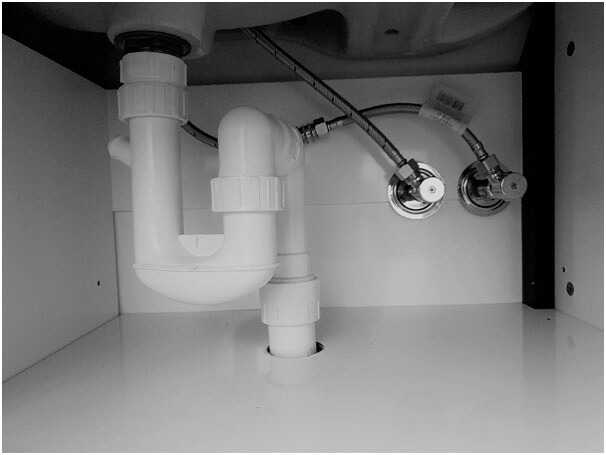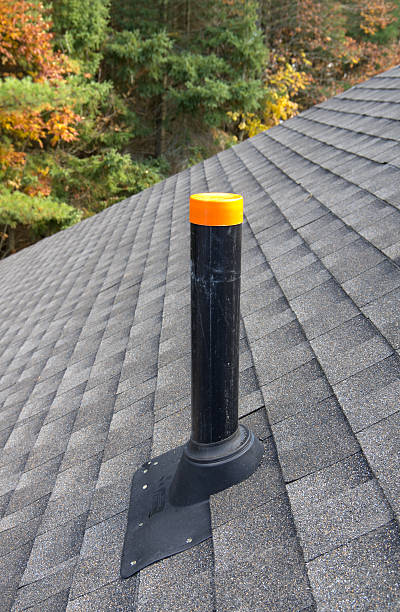Why Adequate Ventilation Is Critical in Plumbing Systems
Why Adequate Ventilation Is Critical in Plumbing Systems
Blog Article
The content below relating to The Upsides of Proper Ventilation in Plumbing Design is fairly enjoyable. Don't miss out on it.

Correct ventilation in plumbing systems is commonly forgotten, yet it is important for preserving the functionality and security of your home's pipes. Air flow aids control air pressure, protect against the buildup of damaging gases, and ensure the reliable removal of waste. In this overview, we will certainly explore the value of appropriate plumbing air flow, how it works, and the benefits it offers your plumbing system.
Recognizing Ventilation in Pipes
Air flow in pipes describes the network of pipes that enable air to stream through the water drainage system. These vents serve numerous purposes, including controling atmospheric pressure within the pipelines, protecting against drain gases from getting in the home, and helping in the smooth circulation of wastewater.
Just How Ventilation Works in Pipes Systems
Air Pressure Regulation
Correct air flow keeps well balanced air pressure within the pipes system. When water streams via pipelines, it displaces air. Without sufficient ventilation, this displacement can produce unfavorable pressure, leading to reduce drains or siphoning of water from traps, which can create undesirable smells to seep right into the home.
Stopping Sewage System Gas Accumulation
Among the most important functions of plumbing vents is to avoid sewage system gases, such as methane and hydrogen sulfide, from accumulating within the home. These gases can position significant health and wellness risks and are extremely combustible. Vent pipelines enable these gases to get away safely outside.
Aiding in Waste Removal
Air flow aids in the efficient removal of wastewater by protecting against airlocks in the water drainage system. When air can move easily with the vents, it enables water and waste to flow smoothly through the pipes, lowering the risk of blockages and backups.
Kinds Of Plumbing Vents
Key Stack Vent
The major pile vent, additionally called the vent pile, is the main vent in a pipes system. It prolongs from the main drain align via the roofing, allowing gases to leave and fresh air to enter the system.
Branch Vent
Branch vents link to the major stack vent and serve specific fixtures, such as sinks, toilets, and showers. These vents ensure that each fixture has sufficient air flow to work appropriately.
Air Admittance Valve (AAV).
An Air Admittance Shutoff (AAV) is a one-way shutoff that allows air to get in the plumbing system without the need for a standard air vent pipeline prolonging through the roofing. AAVs are generally made use of in renovations or locations where installing a basic air vent is impractical.
Signs of Poor Air Flow in Pipes.
Slow Draining Fixtures.
If your sinks, tubs, or toilets are draining pipes gradually, maybe an indication of poor air flow. Poor air flow can create a vacuum effect, making it difficult for water to drain properly.
Gurgling Appears.
Gurgling audios coming from drains are frequently an outcome of air being drawn through water catches as a result of negative stress in the pipelines. This is a clear indicator of inadequate air flow.
Undesirable Odors.
Drain odors inside your home are a red flag that your plumbing system is not properly aerated. This could indicate that drain gases are not being sufficiently aired vent outside, leading to potentially dangerous problems.
Usual Air Flow Blunders.
Poor Vent Sizing.
Using undersized vent pipes can bring about inadequate air flow and pressure discrepancies in the system. It's vital to utilize vents that meet the specific needs of your plumbing system.
Improper Vent Positioning.
Placing vents also far from the fixtures they offer can decrease their performance. Correct positioning makes sure that air can move freely and efficiently via the system.
Disregarding Code Requirements.
Building regulations provide particular guidelines for pipes air flow. Overlooking these codes can result in a system that fails to function properly and may result in pricey fixings or carcinogen.
Benefits of Appropriate Ventilation.
Improved System Effectiveness.
Properly ventilated pipes systems run much more effectively, with less clogs, faster draining, and much less pressure on the pipes. This efficiency expands the life expectancy of the plumbing system.
Improved Air Quality.
By protecting against sewer gases from entering your home, correct ventilation adds to far better interior air quality, making your living atmosphere healthier and a lot more comfy.
Stopping Water Damages.
Ample air flow aids avoid water from being siphoned out of catches, which can bring about sewer gases getting in the home and triggering water damages with time.
Steps to Make Certain Proper Ventilation.
Consulting Pipes Codes.
Constantly consult local plumbing codes when designing or changing your plumbing system. These codes give the needed guidelines for appropriate airing vent and ensure your system satisfies security standards.
Routine Examination and Upkeep.
Regular assessments can aid recognize possible ventilation concerns prior to they come to be significant problems. Upkeep tasks, such as cleaning air vent pipelines and checking for obstructions, are important for keeping the system in good working order.
Professional Setup.
For brand-new installments or major adjustments, it's wise to work with a professional plumbing. They have the proficiency to ensure the ventilation system is appropriately designed and installed according to code.
Conclusion.
Proper ventilation is an essential element of any kind of plumbing system, making sure that it functions successfully and securely. By understanding the relevance of air flow, acknowledging the indicators of poor ventilation, and taking steps to preserve your system, you can protect against pricey problems and secure your home's air high quality.
4 Things You Should Know About Your Plumbing Vents
What Plumbing Vents Are
Also called a vent stack, a plumbing vent is a vertical pipe attached to your drain line that runs through your roof. The plumbing vent pipe, or plumbing air vent, removes gas and odors from your plumbing system and allows fresh air to enter the pipes, helping the water to flow out of the drain pipes.
What Plumbing Vents Do
Plumbing vents have two basic functions. One of which is to allow unpleasant smelling wastewater and sewer gasses to escape your plumbing system instead of entering your home. Plumbing vent pipes are typically located on roofs, away from windows, to ensure the fumes exit the home completely.
The other function of the plumbing vent is to move fresh air into your plumbing system. This helps move water through every plumbing fixture in your house, like toilets and sink drains. Think of the way in which you need to let a little air into the bottle as you pour soda in order to make the drink flow smoothly.
Different Types of Plumbing Vents
True vent: This is the most common vent option. In simplest terms, a true vent is a vertical pipe attached to your drain line that exits through the roof. They often function as the main vent that other fixtures can connect to. Re-vent pipe or auxiliary vent: Attached to the drain line near specific plumbing fixtures, re-vent pipes run up and over to connect to the main vent. Common vent: Two plumbing fixtures installed on opposite sides of a wall are typically tied into the vent stack using something known as a sanitary cross. Wet vent: This venting option operates as a drain pipe and a vent at the same time. Wet vent drainage systems drain water from one fixture while venting the air from another. Although they’ve been used for over 100 years, wet vent systems have only recently been added to the plumbing code in many areas. If you’re planning on installing one in a bathroom remodel, make sure you check your local code prior to construction. Loop vent: For free-standing fixtures like kitchen island sinks, loop vents are ideal. These vent pipes run under the floor, rise from the P-trap, and create a loop inside the cabinet sink. Air admittance valve: An AAV is a one-way mechanical valve typically installed at the site of the plumbing fixture. AAVs allow venting to occur without having to tie into a larger venting system. They’re ideal for venting fixtures where you aren’t able to easily connect to an existing vent system. Common Plumbing Vent Issues
Although vent pipes typically don’t have water flowing through them, they’re still subject to many typical plumbing issues. For example, clogs are one of the most common problems associated with sewer vent pipes. If your vent pipe gets clogged, all of your plumbing fixtures tied into the vent stack will be affected.
A sink with a slow drain that bubbles and gurgles or a strong sewage smell around your toilet are both indicators that your toilet vent pipe is clogged. Because most vent pipes exit through the roof, old leaves, twigs or even a bird’s nest could be clogging the pipe.
Clogs in your vent pipe system cause a buildup of negative pressure, meaning that water won’t be able to flow out of your home very well. It’s similar to putting your finger over the opening of a straw to trap water inside. When you remove your finger, the water is able to flow out of the straw.
If you suspect you have any blockage in your vent, make sure you have a professional come examine the situation. Left unchecked, a blocked air vent can lead to other costly repairs, like leaks and sediment buildup.
Under Pressure
Pipe vents are essential aspects of a home’s plumbing system. Owning a home means learning about all sorts of things you never put much thought into before. But by understanding as much as you can about the important systems of your home, you can keep those budgets intact and those anxiety levels low.
https://www.homeserve.com/en-us/blog/home-improvement/plumbing-vents/

I stumbled upon that post on Essential Plumbing Vent Pipes: Understanding Their Role while doing a search on the web. Appreciated our article? Please quickly share it. Help others check it out. Thanks for your time. Please stop by our site back soon.
Request Free Estimate Report this page